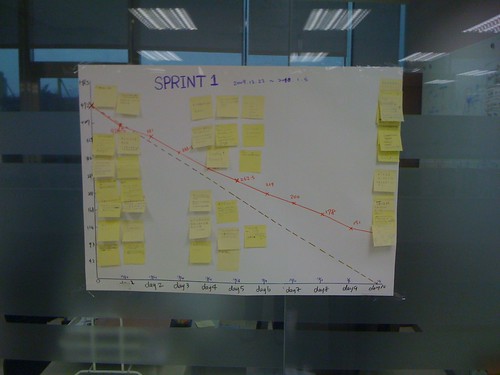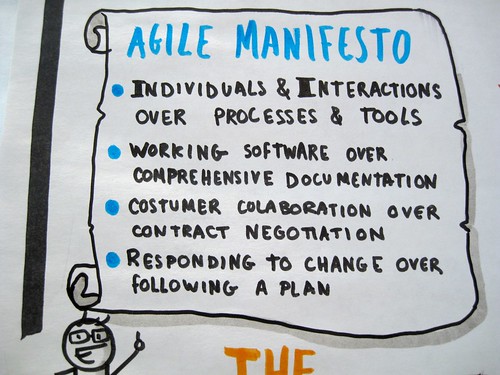Scrum methodology
Updated: Tue, 17 Mar 2015 by Rad
Scrum methodology
Scrum is an agile way to manage a project, usually software development. Agile software development with Scrum is often perceived as a methodology; but rather than viewing Scrum as methodology, think of it as a framework for managing a process
Scrum emerged in the early 90s from the work of Jeff Sutherland and Ken Schwaber. They formalised and turned their way of working into a cohesive set of rules and roles for complex product development, that was formally presented as "Scrum" to the public for the first time in 1995. As the co-creators of Scrum are signatories of the Manifesto for Agile Software Development, the Agile values and principles underpin the Scrum framework.
Scrum is an Agile framework for completing complex projects. Scrum originally was formalized for software development projects, but it works well for any complex, innovative scope of work. The possibilities are endless. The Scrum framework is deceptively simple.
Source: Burn down chart, by visualpun.ch, flickr, License: Creative Commons
Source: Agile Software Development methodology, by commons.wikimedia.jpg, wikimedia, License: Creative Commons
Agile Manifesto
In February 2001, 17 software developers (see below) met at the Snowbird resort in Utah to discuss lightweight development methods. They published the Manifesto for Agile Software Development
"We are uncovering better ways of developing software by doing it and helping others do it. Through this work we have come to value:"
- Individuals and interactions over Processes and tools
- Working software over Comprehensive documentation
- Customer collaboration over Contract negotiation
- Responding to change over Following a plan
Source: Agile Manifesto, by visualpun.ch, flickr, License: Creative Commons
< back to glossary
Agile software development - from around the web
- Agile Manifesto
- What Is Agile? (10 Key Principles of Agile)
- Agile methodology
- Scrum - create software that delivers more value
- There's value in the Scrum Values
- Learn About Scrum
< back to glossary


